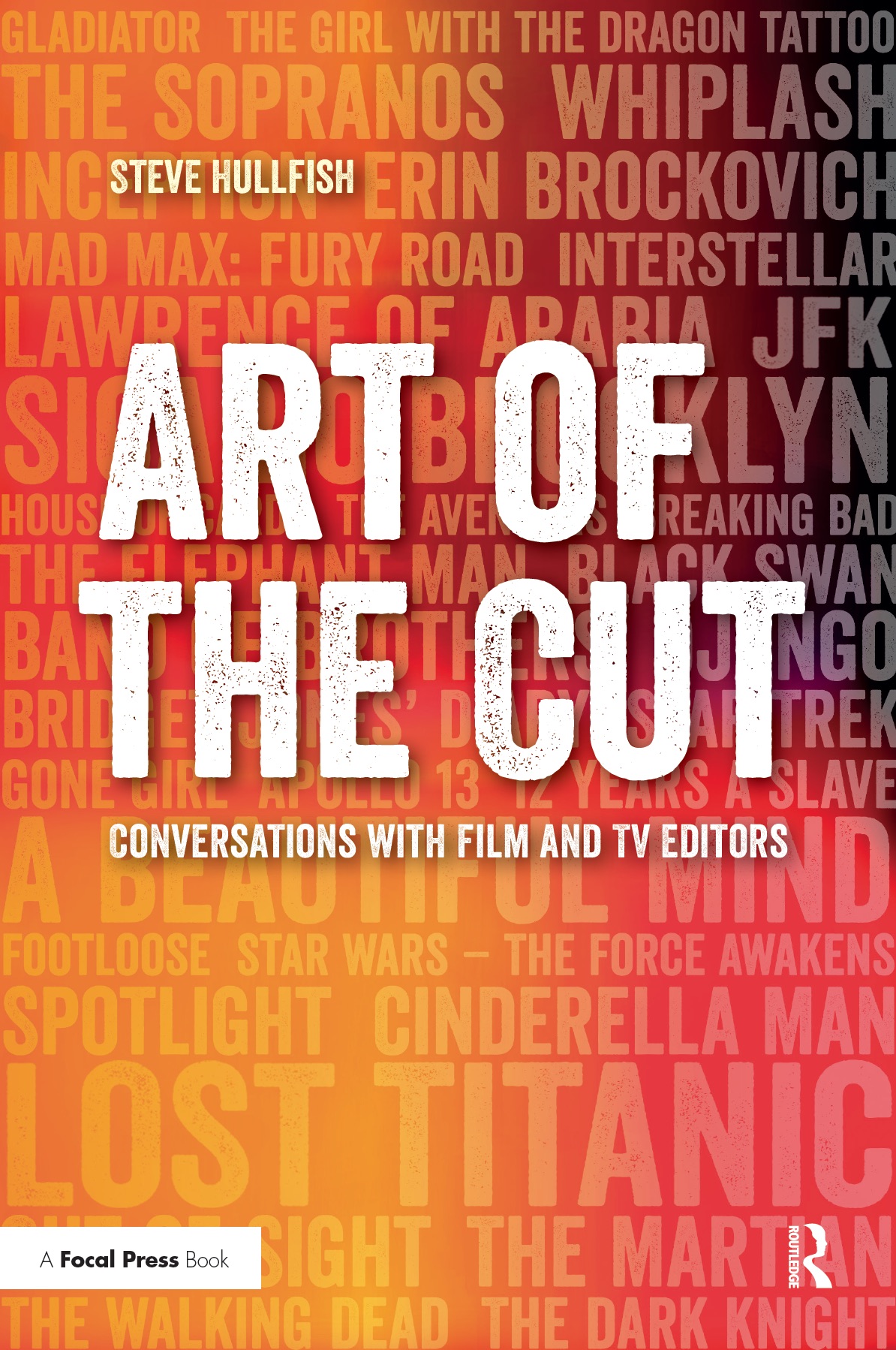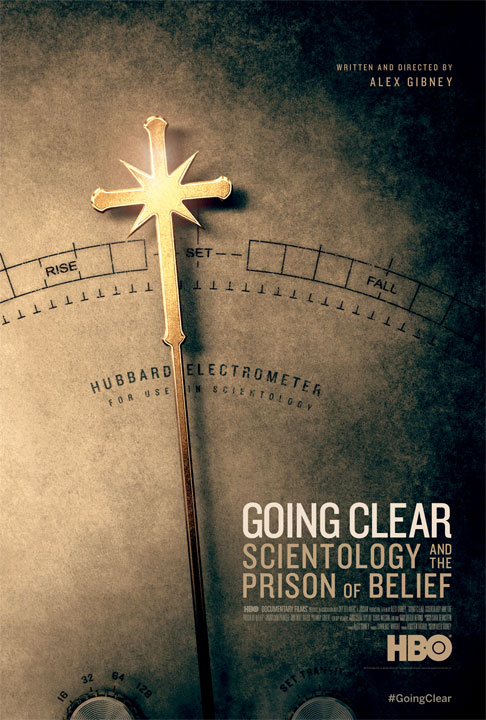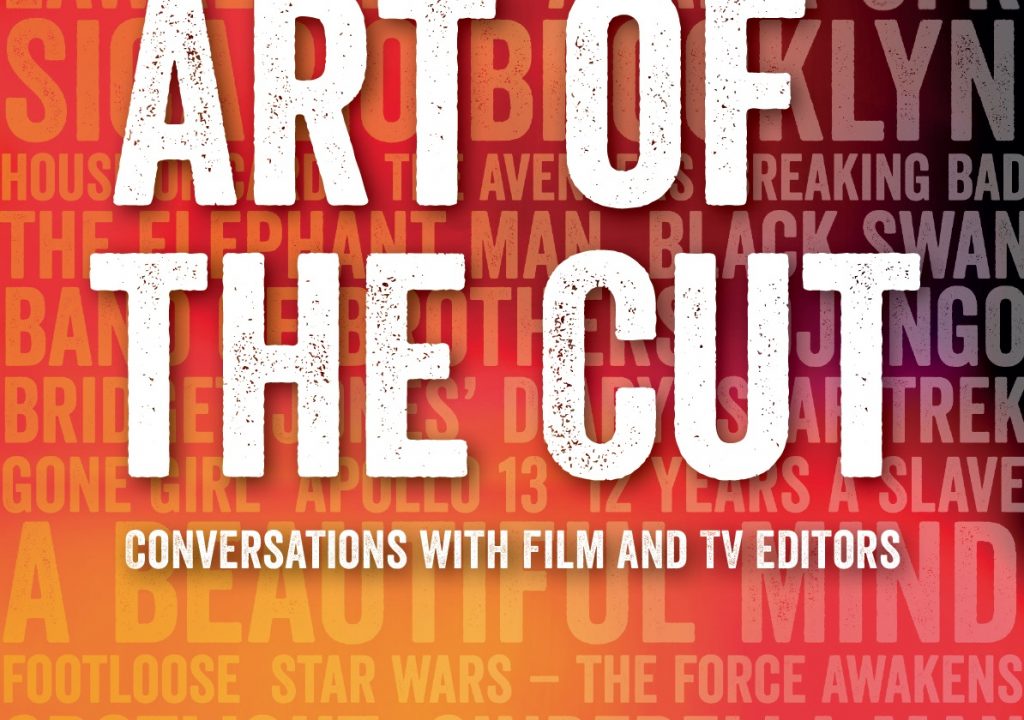

ANDY GRIEVE: Before the project that I’m working on now, I did the HBO Scientology documentary “Going Clear” (with Academy Award-winning documentary director Alex Gibney). The approach depends on whether it’s a “talking heads and archival film” or is it an archival film or is it a verite film? I’ve edited all of those styles, so it’s kind of different for each film but my general process is that I like to watch everything before I start cutting. I can’t really cut and screen at the same time. I like to watch and absorb things and not really make choices at the beginning. It’s all a process of compartmentalizing information, so as not to get completely overwhelmed.
HULLFISH: How much do you depend on being able to memorize a huge volume of soundbites and visuals as you edit?
ANDY GRIEVE: I do not try to memorize. I take notes either on notecards that go on the wall or in locators in the Avid.
HULLFISH: How do you keep from getting overwhelmed? How much footage do you think you went through on the Scientology film? 120 hours? 130?
ANDY GRIEVE: I’ve never really done the math. Probably 25 hours of interviews and easily 100 hours of archival. I had an assistant and researchers helping out. But easily 75 to 100 hours. I start by watching the interviews if that’s possible because it clues you in to the kind of archival footage you should be looking for and because you kind of start to see threads through stories and can see that, for example, these two characters shared an experience and can be intercut, or they talk about the same thing. So if the driving thing for the film is going to be the interviews, for me that guides the rest of it. Those are the characters you want, so even though they are “talking heads” you want people to feel that these people are live characters that are driving your storytelling and don’t feel like experts sitting in a chair, blabbing on. So I really let the stories just come out of people’s experiences and let that guide me.
HULLFISH: In addition to story, how do you build or create emotional impact in your documentaries? Do you have to worry about being too manipulative with emotion?
ANDY GRIEVE: I am always concerned with cause and effect. I am OK with manipulating things for emotional impact or story arc, but I never want to be creating a false sense of cause and effect. In the end, documentaries are about finding truths and you have to be honest in that pursuit.
ANDY GRIEVE: I’ll watch the interview and I’ll literally just cut out the questions and the dead air and end up with a sequence that’s just the best parts of the interview and from there I’ll do further cuts where I’ll organize this person or that person talking about this subject or that subject so that you end up with organized clips of different characters and their own telling of the stories and then from there I’ll start to weave those together, intercutting two or three characters. And only when I’m much further down the line – when I know that this is the story we’re going to be telling – will I go into the archival stuff. Because so much of the documentary process is writing the script in the edit, there’s not much point for me to flesh out the story with imagery and everything until you know how a story will be used in the whole film. From there, you can start putting in music and worry about pacing and decide whether this is going to be in the beginning of the film or the end of the film. It isn’t really obvious that a specific story would start the film but it actually ends up a lot later, so then it needs to be paced differently and have different archival stuff in it, because it has a different function in the larger story.
HULLFISH: That’s exactly my approach as well. Creating selects reels of tightened, cleaned-up interviews that are organized by thoughts/storylines and then using those selects reels as the source material.
ANDY GRIEVE: I’ll make a bunch of little “modules” I call them. A couple of minutes here. Ten minutes in that one. I’ll end up with a bunch of different pieces that I then start to piece together into the overall story. But at first, it’s like a bunch of little short films that have their own beginnings and ends – or don’t. The trick is then how to trace a thread through all your little pieces, but for me the biggest trick is to compartmentalize so I don’t lose my mind. I can’t think of it like “There’s 300 hours of footage” because I’d just quit. I couldn’t do it. It’s not productive and it loses the fun of it to be overwhelmed by this mountain of footage. I like to at least pretend that I have a process that I’m on top of it. I’m not being buried by all of it.
HULLFISH: What editing system are you using currently, or have you always used the same system?
ANDY GRIEVE: I’ve used Final Cut Pro on a few things but if I never saw it again, I’d be happy. I’m very much an Avid person. For every reason: media management, timeline function, effects. Final Cut has no Script Tool (Script Integration) where you can bring the transcript of an interview into Avid and link the footage to the transcript so you can do word searches. Later on in the process it just makes it very easy to say “I know someone said that, but where is it” and it allows you to do a very quick search. That for me is really the biggest “Final Cut versus Avid” thing. Towards the end of the process I try to take a pass back through all of the raw interviews to see if there’s something I’ve missed, or I might see an interview differently in the context of the story I’ve built or maybe they recorded an interview later and now something that someone said earlier has different meaning than it had the first time I listened to the interview. So being able to jump to parts of the interview in the Avid from the transcripts makes it easier.
HULLFISH: How are you organizing these selects reels you’ve got?
ANDY GRIEVE: My assistant organizes all the raw footage, so that’s got its own system. It’s not that tough. I really just keep a master interview selects reel for each interview. The interviews are organized in the timeline by subject with locators separating them. Some editors, I’ve seen, end up with a ton of sequences, but that would overwhelm me. I’d rather have fewer longer sequences than more shorter ones.
ANDY GRIEVE: After I pull my selects, I’ll have my assistant go in and put a locator at the head of each clip and sometimes even in the middle of the clip and put in the first few words of the sentence or the key words so we can search through locators within the sequences. And the last film I worked on was a little different. There were only eight key interviews. Then on “We Steal Secrets” about WikiLeaks, there were 35 interviews and a lot more footage, so that was a little trickier organizationally. Then I did a film about the OJ Simpson car chase that was entirely archival footage so that had no interviews at all, so that was a completely different process. You have to approach each film separately. The OJ Simpson thing was about one day in sports with the car chase and all of these sports things that took place on that day that kind of wove through that. On that we ended up mapping out a 24 hour timeline of all the best footage we had from that day, so it ended up being a time-of-day timeline on different layers so that we could see when things were overlapping. So that was a little different… almost like detective work. Each one has its own little challenges and idiosyncrasies so you have to adapt to that. I did one narrative feature film (“The Burrowers”) and other than that I’ve never been given a script. One of the things I really like about the job is really being able to own that and be in charge of that. And I like directors who will give the editor the space to run their room their way and figure out the best way to achieve all that.
HULLFISH: If you build a cut with primarily the interviews, when you go back and add b-roll and archival, do you add that in a layer or layers on tracks above the interviews, or do you try to keep everything on a single track when possible?
Andy Grieve: I always work in multiple tracks for organizational reasons and also because sometimes I have multiple options stacked on different tracks, like if I am debating about using one image over another, this shot versus that shot, I will leave them all in the timeline on different tracks.
HULLFISH: I saw that you’ve directed a film (“Can’t Stand Losing You: Surviving the Police”). How did your editing inform your directing?
ANDY GRIEVE: That was a great experience for me because I got to own everything. That was kind of an odd film in a sense because we didn’t go out and shoot in the field and there weren’t new interviews. It was all narration and archival. I adapted Andy Summers’ memoir into a screenplay of sorts and I did the rough narration myself. I just read parts of the book into a mic and then I worked with Andy Summers in the studio to make it a little more conversational here and there and put it into his voice and his words. But it’s very closely related to the text of his memoir.
HULLFISH: What are some of the amounts of raw footage that you’re coping with on these projects?
ANDY GRIEVE: The talking heads and archival stories are all in the 100-300 hour range. The one that was the most out-of-control was this movie “The Carter” about Li’l Wayne and that was entirely verite and they spent a month with the guy and they just rolled the camera non-stop and there were two cameras a lot of the time, so that was easily 500 hours plus. It was crazy and a lot of it was just him on the tour bus watching his friends roll joints and get high. It was insane. I could have easily made a 90 minute reel of just people sparking joints. It was just really a massive job of waiting and being patient to watch and watch and watch until something finally happened. There’d be hours of footage of them hanging out in the recording studio and then suddenly, out of nowhere he decides to tell the story of losing his virginity. Suddenly you have seven minutes of this incredible footage and his friends are all laughing at this amazing moment. But on either side of that in the dailies is just hours of nonsense. Nothing. You just have to be able to sit there and watch it and have patience. I’ve just got the right personality type for doing that. It’s sort of like a treasure hunt. You kind of feel like you’ve discovered it and you could have missed it. If I didn’t have the patience, I could have easily just fast-forwarded past that.
There are these ups and downs in the edit process where you have days where you just feel this is never going to come together. What am I watching this for? Where is the movie? What is going on? And then little pieces… things start to click. Things start to fall in to place and then over time you have a movie. It takes a year… or more sometimes.
ANDY GRIEVE: The range is probably six months to 18 months. “We Steal Secrets” took about 18 months. The Scientology thing I did took a little more than a year. And that’s just me as the editor. On both of those, the assistant started a good three or four months before me and before them were researchers who were trying to pull together the archival. It could easily be two years from the first interview till someone gets to see it at a festival or whatever. But we’re talking about Alex Gibney films where there’s a good budget and people are getting paid and other films that have smaller budgets, like the first film I worked on, I was the third editor and I came into it five years into the process. They cut it and they recut it and shot some more and then reshot a bunch of stuff, then I came in and recut it. I mean, it’s one thing being the editor and it’s another being the producer or someone who spent five years of his life. At film festivals, people always ask “What was the budget? And the guy had the great line that he’d say: “This cost me five years of my life.” Which I think is the perfect answer. It’s a labor of love by definition.
HULLFISH: Do you get an opportunity to ask the director for additional footage or a re-shoot on an interview if you don’t feel you have enough to tell a story?
ANDY GRIEVE: That’s the way Alex Gibney actually works, is that he shoots the interviews and we wait till we’re pretty much picture-locked before we do any of the re-enactments or b-roll or graphics or anything like that.
HULLFISH: Describe your collaboration with your directors, especially with Alex, who you’ve worked with multiple times. When do you stand up for what you think is right and how do you know that you should cede to the director? Any advice for creative collaboration?
ANDY GRIEVE: It is really important to me that the edit room be a place where people can express opinions and share ideas and not feel like they are going to offend anyone or step on anyone’s toes, and Alex feels the same. He gives me the space to work and be creative and I give him the space to bring his ideas to the process. It has been a great collaboration.


